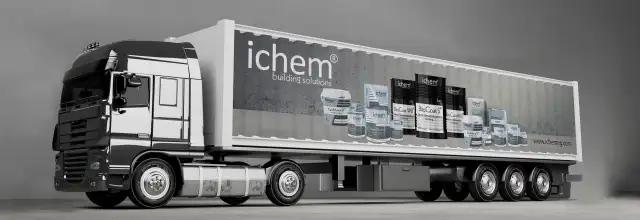
Expansion and Settlement Joints in Buildings | iChem Egypt
Introduction
In modern construction, structural joints are an essential element that cannot be overlooked. They are the first line of defense against cracks, leaks, and structural damage caused by temperature changes or uneven soil settlement.
Among the most important types are:
Expansion Joints
Settlement Joints
In Egypt, iChem plays a leading role in providing complete solutions for these joints in line with the Egyptian Code and international standards. This makes iChem the trusted choice for large-scale projects such as bridges, tunnels, factories, and commercial buildings.
What Are Expansion Joints?
Expansion joints are vertical separations designed to allow construction materials to expand and contract due to thermal changes or structural loads.
They start above the foundation and extend up to the roof.
They prevent cracks and deformations caused by expansion or shrinkage.
Where Are They Used?
Airports such as Cairo International Airport
Bridges and highways like 26th of July Corridor
Large-scale facilities such as shopping malls, hospitals, and universities
What Are Settlement Joints?
Settlement joints are structural separations used when the soil beneath a building may settle unevenly, which could compromise the stability of the structure.
They extend from the foundations to the roof.
They divide the building into independent structural and architectural sections.
Where Are They Used?
Buildings constructed next to older structures
Large residential projects like the New Administrative Capital
Industrial projects built on different soil types
Key Differences Between Expansion and Settlement Joints
Aspect | Expansion Joints | Settlement Joints |
|---|---|---|
Purpose | Handle thermal movement and material expansion | Handle uneven soil settlement |
Execution | From above foundations to roof | Across the entire foundation to roof |
Cause | Heat changes, material shrinkage/expansion, loads | Soil variation or different foundation levels |
Applications | Bridges, large buildings, airports | Adjacent buildings, non-uniform soil projects |
Other Types of Structural Joints
Besides expansion and settlement joints, construction may also require:
Seismic Joints – to absorb seismic activity in earthquake-prone zones.
Waterproofing Joints – to prevent leakage in tunnels, basements, and water tanks.
Shear Joints – to handle lateral loads in tall buildings.
Egyptian Code & International Standards
The Egyptian Code recommends expansion joints every 30–45 meters in large concrete structures.
International standards such as ACI and ASTM specify detailed materials and dimensions.
iChem’s products are fully compliant with both local and global codes, ensuring safety and durability.
iChem’s Role in the Egyptian Market
As a leader in construction chemicals and structural solutions, iChem provides specialized products for expansion and settlement joints.
Why Choose iChem?
Certified products matching Egyptian and European standards.
Custom solutions for mega-projects (bridges, tunnels, factories).
Engineering and technical support for contractors and consultants.
After-sales service with extended warranties.
Nationwide distribution for fast supply and on-site support.
Case Study: October Water Treatment Plant
In the October New Water Plant project, iChem supplied expansion joints and waterproofing systems that delivered:
100% water tightness with no leakage.
Extended service life of over 25 years.
40% reduction in maintenance costs.
Advantages and Disadvantages
Expansion Joints
Advantages:
Prevent cracks and deformations.
Reduce long-term maintenance costs.
Extend the building’s service life.
Disadvantages:
Require highly accurate design and execution.
Add initial project costs.
Settlement Joints
Advantages:
Ensure higher structural stability.
Prevent partial collapses due to soil settlement.
Disadvantages:
May affect the overall architectural appearance.
FAQs (Frequently Asked Questions)
Q1: Are expansion joints required in every building?
No, but they are mandatory in large structures such as bridges, tunnels, and high-rise buildings.
Q2: How are expansion joints waterproofed?
Using materials like PVC or rubber Waterstop to prevent water seepage.
Q3: What is the average lifespan of structural joints?
Typically 20–30 years, depending on material quality and maintenance.
Q4: Are iChem products certified?
Yes, all iChem products are locally and internationally certified.
Q5: How do I decide between expansion and settlement joints?
It depends on soil conditions, project type, and thermal loads. iChem’s engineering team provides expert consultation.
Conclusion
Understanding the difference between expansion joints and settlement joints is crucial for ensuring building safety and durability. By choosing iChem’s certified solutions, developers and contractors in Egypt benefit from reliable products, expert technical support, and reduced long-term costs—making iChem the trusted partner for sustainable construction.

